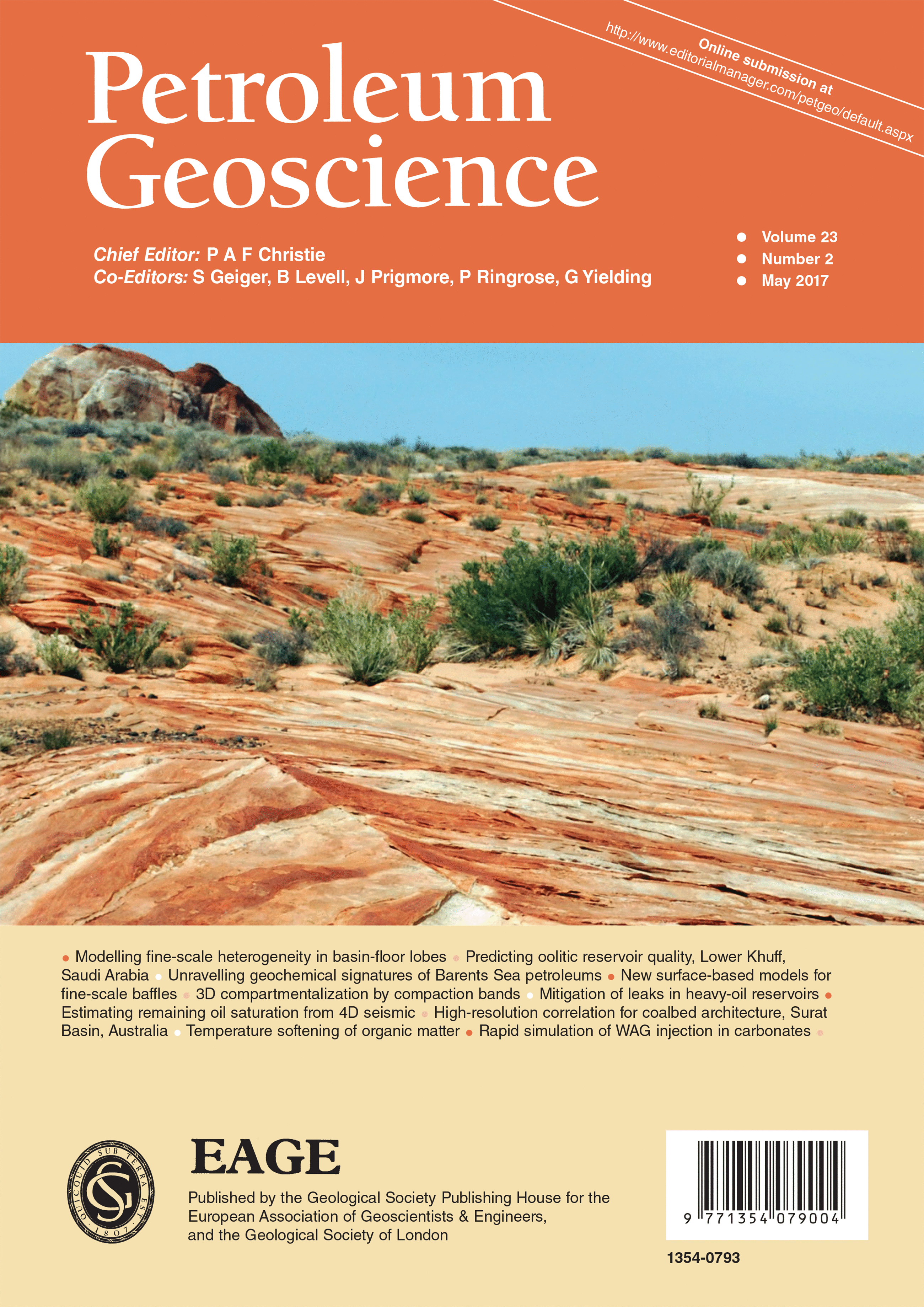
Full text loading...
Hydrocarbon reservoirs often contain thin and irregularly shaped low-permeability heterogeneities at the interface between sedimentary bodies that can act as barriers or baffles where they are aligned perpendicular to the flow. These heterogeneities are often not explicitly captured in simulation models because they occur over lengthscales smaller than a single simulation grid block and, as such, are ubiquitously captured in flow simulations using transmissibility multipliers. This parameterization implies that the properties of the fine-scale heterogeneities are a direct function of the properties in the adjacent grid cells. A new methodology is proposed where fine-scale heterogeneities are modelled using properties attached to surfaces and updated independently from other uncertain reservoir properties present during assisted history matching. This method is validated via a synthetic reservoir simulation model, using the ensemble Kalman filter to assimilate production history. The update of geometrical and petrophysical parameters related to fine-scale heterogeneity improves the history match and production forecast in comparison to traditional implicit techniques that do not honour the characteristics of the heterogeneity. The results indicate that, for history matching, it can be important to capture fine-scale heterogeneities independently from other uncertain reservoir properties even if the fine-scale heterogeneities do not exert a large control on reservoir response.

Article metrics loading...

Full text loading...
References


Data & Media loading...

